In my PreK class, we learn about animal habitats all year long, not consistently, but we return to them repeatedly throughout the school year. What I love about this topic is that it starts simply, and we build on it by discussing attributes different animals have, how they have adapted to their environment, and work on our critical thinking skills. I created these animal habitat sorting cards for my pocket chart but also to use in small groups during free choice. What I love about sorting activities like these is the opportunity to work with my students and discuss why they are sorting the animals the way they are. Sometimes, how you or I would sort an animal isn’t how your student would, and it’s not necessarily wrong. Talk through it. This is also an excellent opportunity to work on vocabulary in a meaningful context.
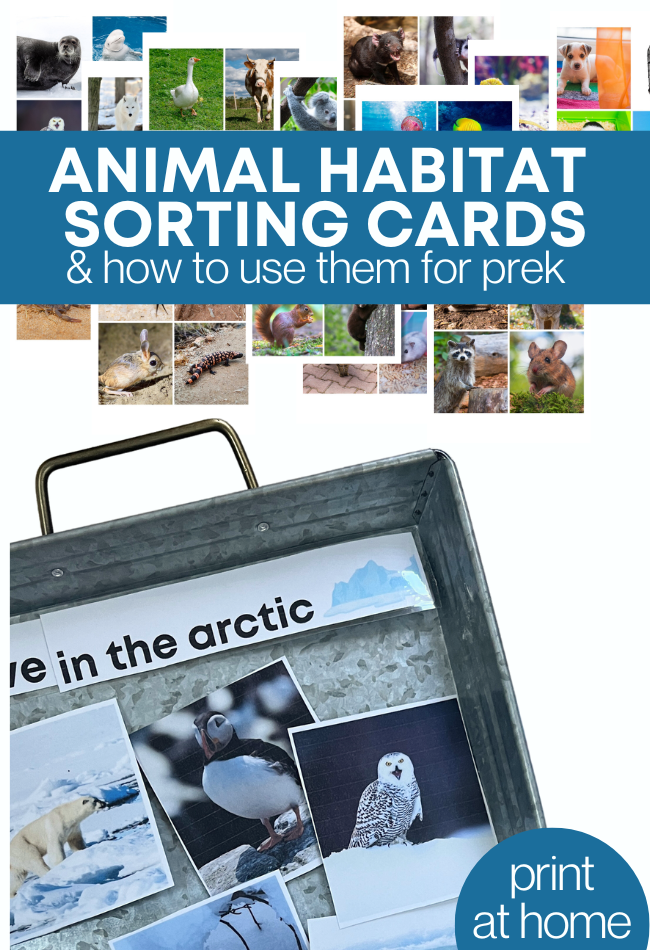
Ready for a bit of prep and a BUNCH of activities?
Start by printing your habitat cards. Get my set here for just $4.99. This set includes eight photos of each habitat: farm, forest, ocean, arctic, desert, pets, and Australia. I created them for the habitats we focus on, but you can create your own with Canva.
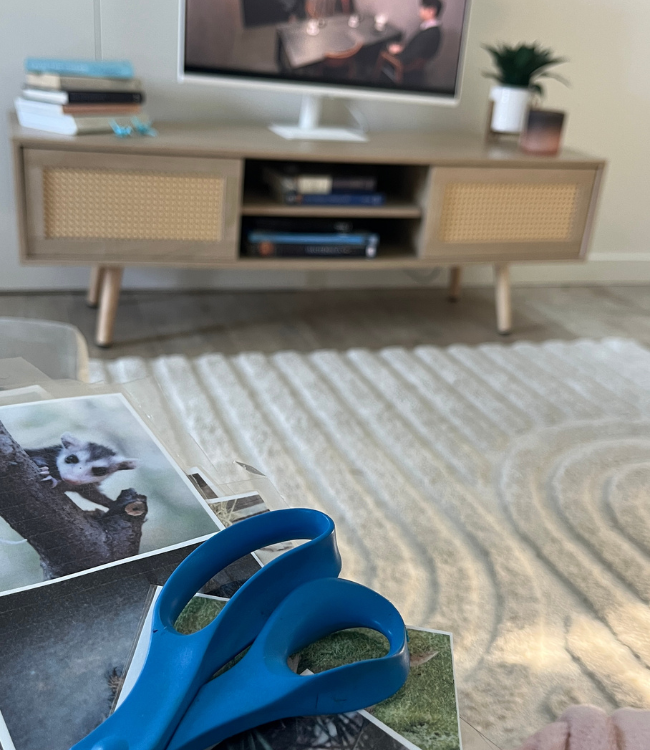
After printing out – laminate and cut while watching your favorite kdrama.
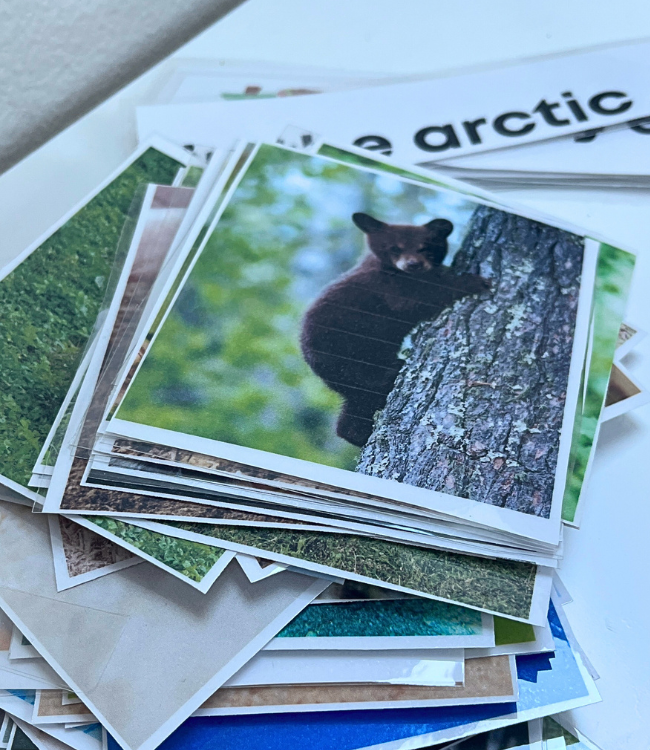
All cut out and ready!
How to use Animal Habitat Sorting Cards with a pocket chart
In my classroom, we are learning about forests right now and will be learning about farms soon, so yesterday, I popped the habitat sorting cards into our pocket chart. I use this activity at free choice but it can be used any time of day, including as a circle time activity with each student coming up to place their photo in the pocket chart. Later this year I will be doing these as we compare and contrast arctic and desert animals. A lesson about how animals’ bodies are adapted to their environment, such as noticing which animals have blubber and fur to stay warm vs. which have huge ears to let off extra body heat and claws to dig in the sand. Then together, we will sort while sharing why we sort them, but it’s still way early in the school year and I’m just laying the foundation for these later lessons. My favorite way to do that is to play at free choice and see what my students already know and what they are curious about.
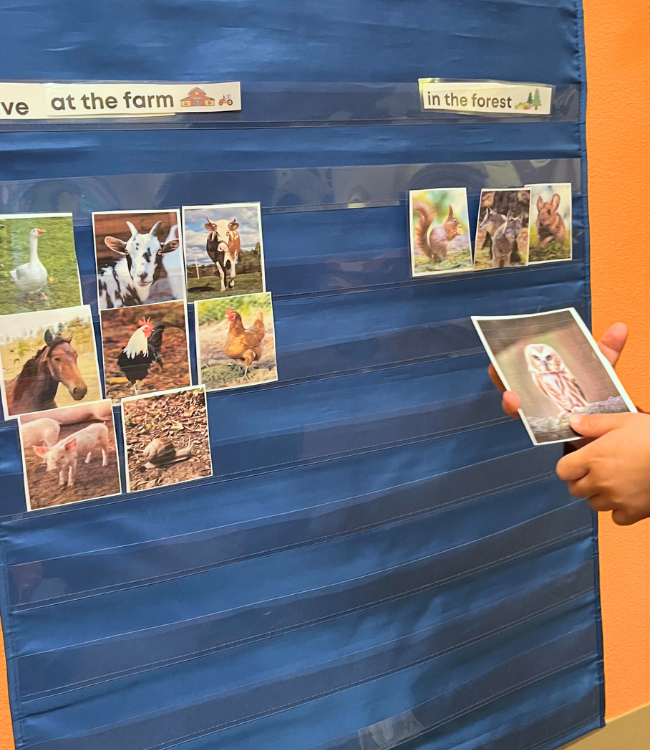
What I loved about this is that these two habitats overlap, so we had wonderful discussions about how to decide where to place the animals. I found it very interesting how they came to these conclusions. The mouse was very contentious because mice are pretty much in every habitat but most of the students who did this activity with me decided it should be in the forest because there is moss in the photo, and they see moss when they go into the forest! Pretty cool thinking, right?
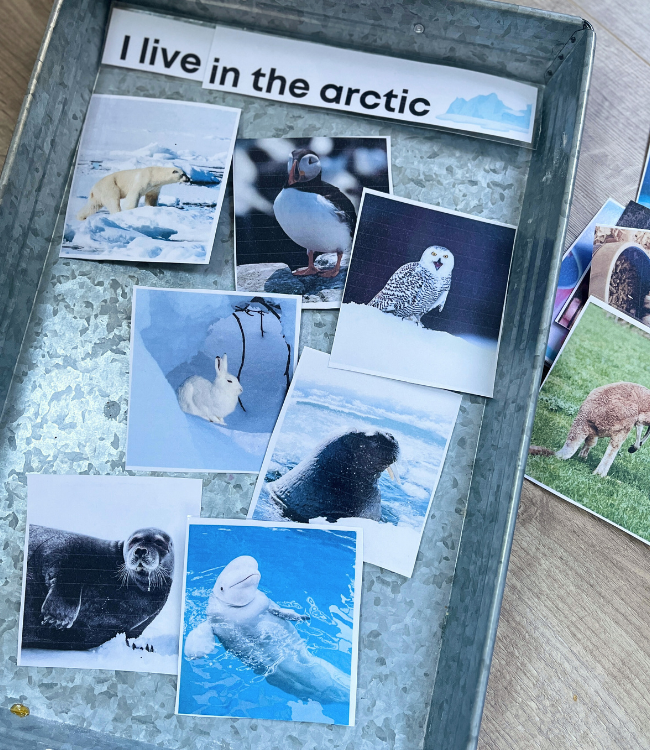
Of course, you can also do them as a tray activity with a small group.
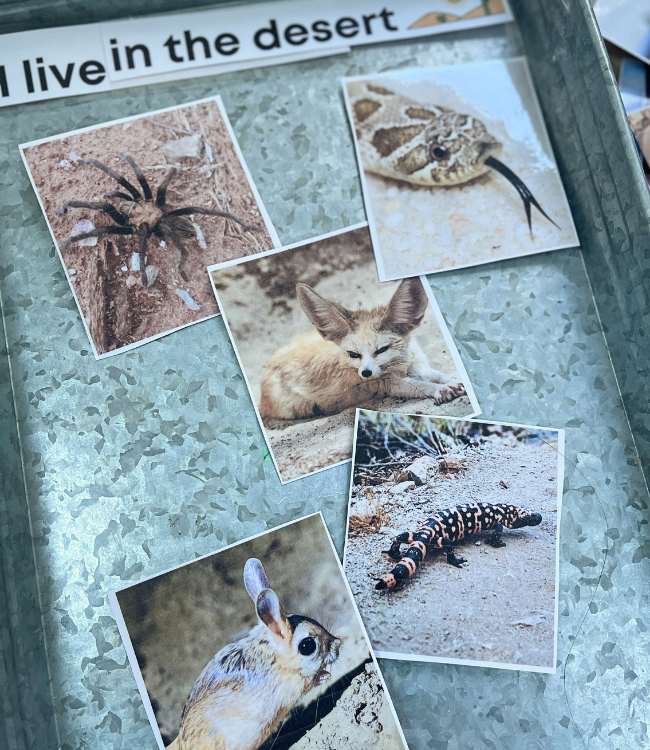
Choosing just one group to add to the tray or with two.
When you do in and out-group sorting like this in a preschool class, the task is easier when the difference is more obvious. So, comparing forest animals to ocean animals would be the simplest. I have another habitat activity with figurines that my younger students love. Check it out here.
Other ways to use Habitat Sorting Cards.
Sort by animal type, like fish vs. bird
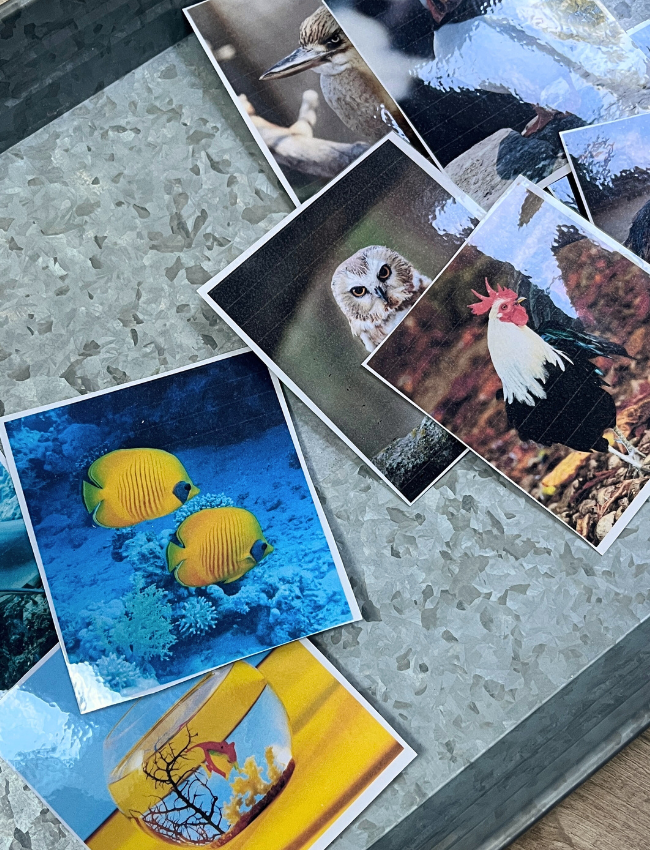
Sort by animals your students see around their homes and ones they’ve never seen before!
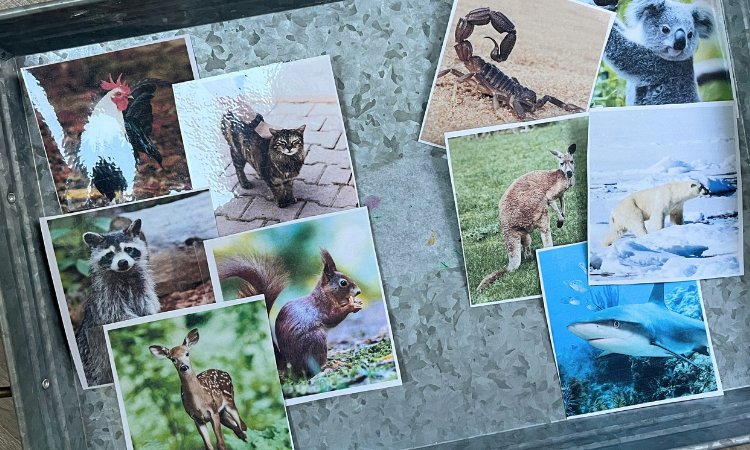
Sort by the type of weather they like
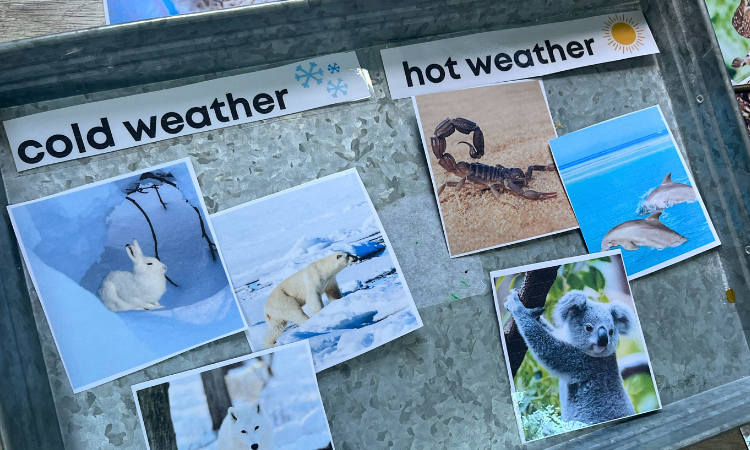
The sky is the limit!
Get all these cards ( 56 animal images total) right here for just $4.99!
Want more ways to teach STEM in your preschool classroom?
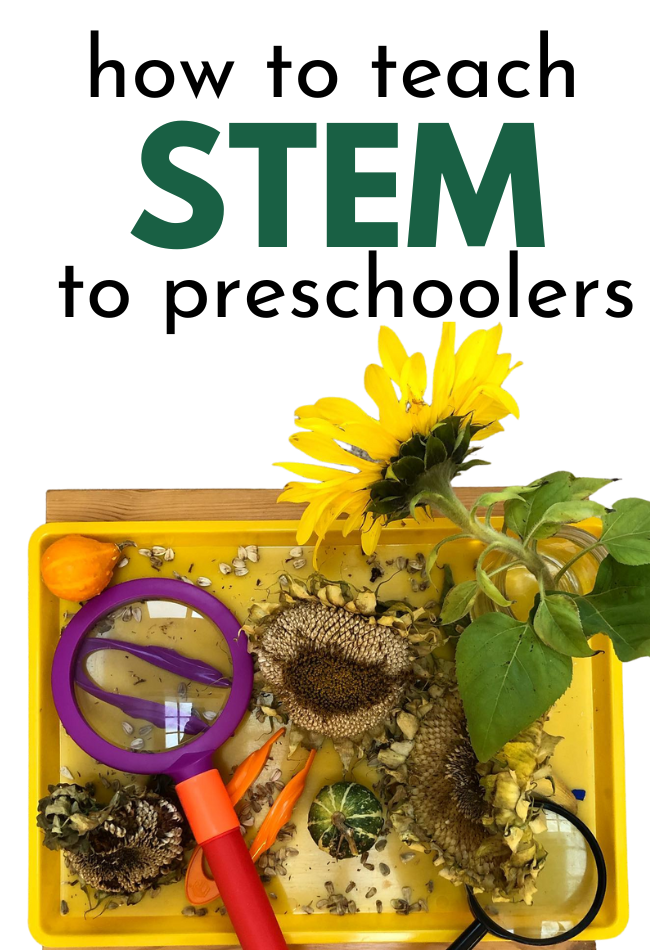
This post is a must-read! But, if you want to know even more about how to teach STEM to preschoolers, make circle time work, and teach early literacy fun and effective, you have to check out my go-at-your-own-pace professional development workshops!
Learn more about these great professional development workshops and how you can learn with me at home here.
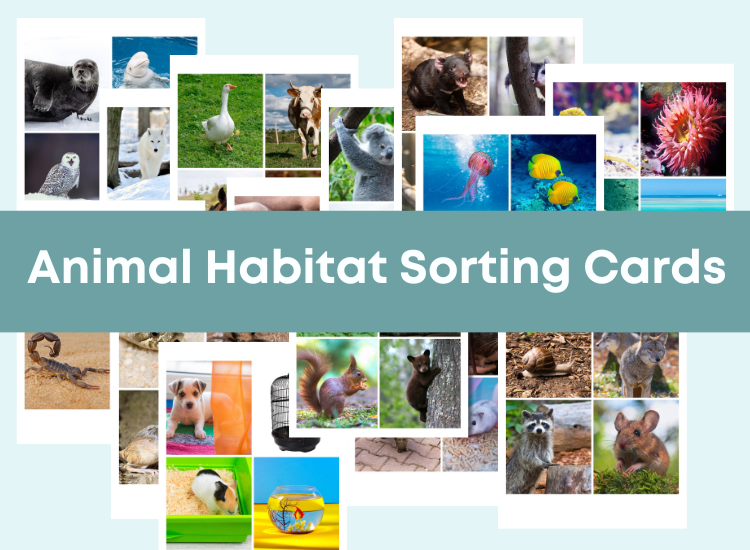


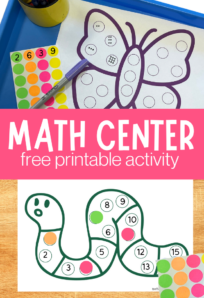
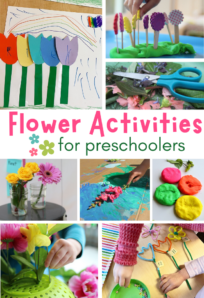

Leave a Comment